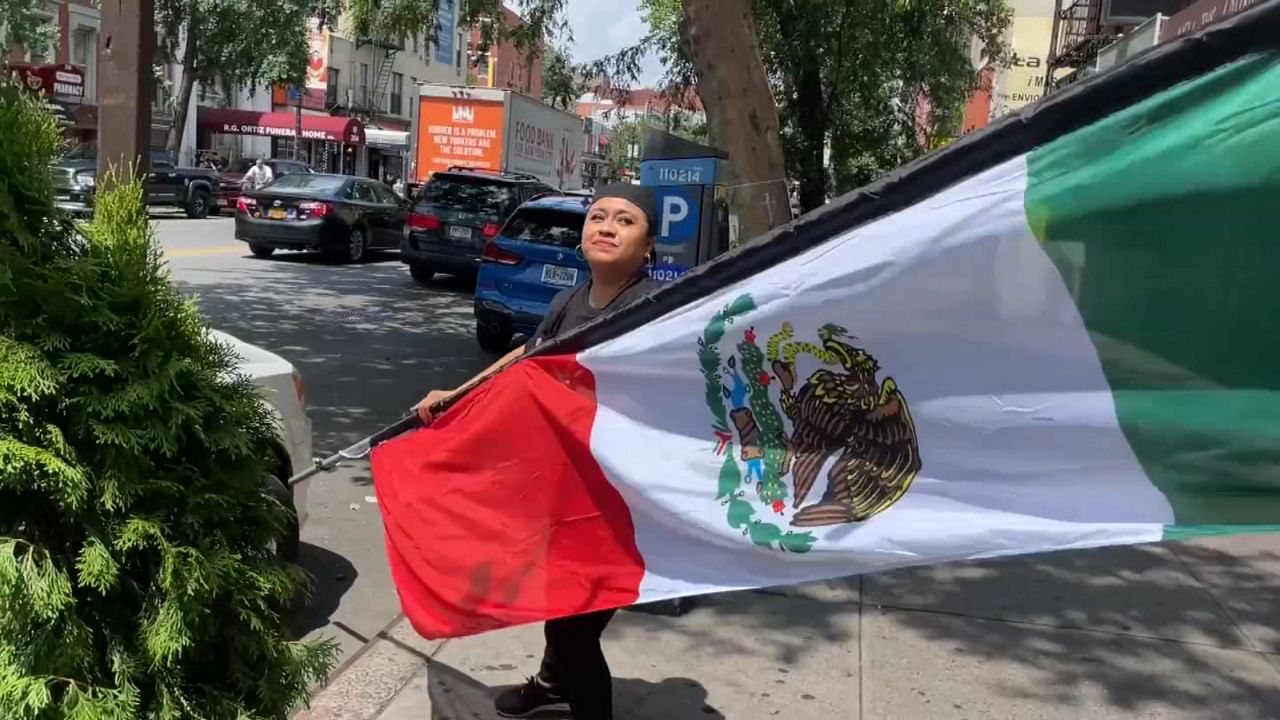“The Ijbaros in canoe”…
-How are the jíbaros in canoes?
“They are ripe plantains, with meat and vegetables.”
Few are the authentic cuchifritos anymore, one on 116th Street in East Harlem refuses to disappear, they have been serving this Puerto Rican delicacy for more than 60 years.
“The Puerto Rican knife is all in common, that’s why it’s called a knife, we have an ear, rennet, tongue, blood sausage, that’s a knife on a plate, all minced, with a banana or yucca,” explained Rosany Reinoso, from the Cuchifritos restaurant .
Until a few years ago, the vast majority of Hispanics who lived in this area, known as the Barrio, were Puerto Ricans. Eli Valentin, was born and raised here.
“My dad and my mom came to this country in 1955 and were part of what is called the great migration of Puerto Ricans to New York and they came to this neighborhood half a mile from here,” Valentin said.
Valentin.
In this area that encompasses the northeastern part of Manhattan, from 96th to 142nd streets, the marqueta was one of the first markets and businesses for Puerto Ricans.
“La marqueta is no longer an exclusively Puerto Rican place, but it represents the diversity of NY and here in East Harlem, the Barrio. Around the corner there is a tiny restaurant called cocotazo, which shows us the memory of what the marqueta”, Valentin added.
Today according to the Furman Center, much of the 43% identified as Latino in East Harlem includes Mexicans, Dominicans and other Latin American countries.
“Some 25 years ago thousands of Puerto Ricans left the neighborhood and many went to other places, well yes, the consequence of that has been a change in terms of political leadership and perhaps even more in culture,” Valentin said.
Calle 116 is packed with Mexican businesses, restaurants like Doña Maty’s quesadillas, and other delicacies from the Aztec country that will make your mouth water.
30 years ago when Maty Herrera arrived in NY, in this area, not even thinking about selling Mexican snacks.
“At that time in the community there were many Puerto Ricans, we were very few Mexicans, and from other countries. And yes, many Mexicans live in this place on 116th Street, and soon it will be called Pueblayork here,” said Herrera, from the Quesadillas restaurant. Mrs. Maty.
Another reason many pioneering Barrio residents have moved is the high cost of rent, according to the Furman Center, increasing from $760 per month in 2006 to $1,220 in 2021.
“At one time there were over a million Puerto Ricans here in New York City, which is tremendous in terms of the number of Puerto Ricans. At one point, a third of all Puerto Ricans in the world were here,” Valentin said.
The hairdresser Edith Orellana arrived from Ecuador to this area more than 30 years ago, in recent years her clientele has changed.
“Some people have left, others have stayed, but we do have clientele from all over the world. Puerto Ricans, Mexicans, Dominicans and now we have this time, because many Americans have come, they are coming from there to here, and those from here They are already sending them to another place,” said Orellana.
Salsa was born in East Harlem, thanks to the presence of Puerto Ricans and Dominicans, but it is also the birthplace of the first renowned Latino politicians.
“The first Latino politician in the state of NY is established here, Oscar García Rivera comes from here, leaders of the Democratic party, the first Puerto Ricans came from here, the first Latina woman elected to the state, to the state senate comes from here,” he said Valentine.
2023-07-06 15:34:00
#East #Harlem #majority #Puerto #Rican #Latinos #nationalities
